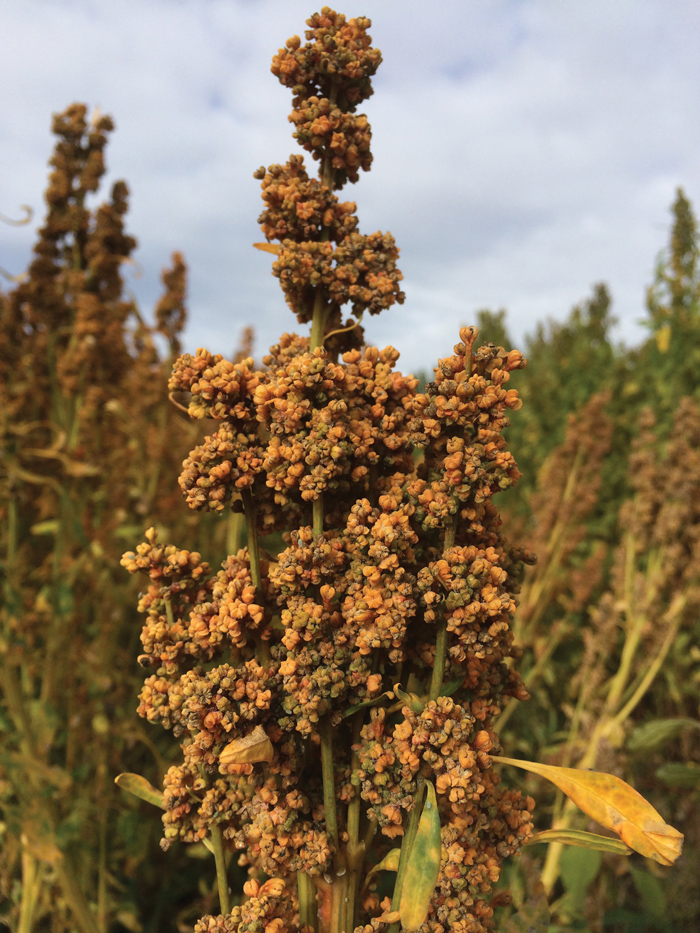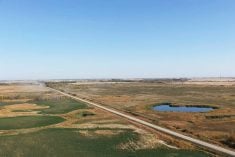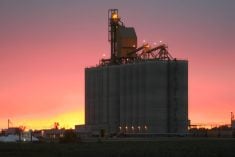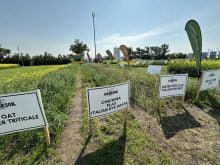Quinoa has been cultivated for thousands of years. During that time it has been variously revered as sacred, relied on to feed a people and it has also been misunderstood and under-appreciated. Quinoa can be grown in many geographies given the right conditions, but its origins are high up in the Andes Mountains of South America.
There is only one quinoa processor on the Prairies: Northern Quinoa Corporation. The company was created in 1994 by a farming family, the Dutchesons. “In the early ’90s, Dad began to experiment with quinoa on the farm,” explains Dutcheson, Joe’s eldest son and general manager at Northern Quinoa. “He’d learned about it at a diversification and special crops meeting. Quinoa caught his eye because it was frost tolerant and we’d had issues with frost damaged crops in east central Saskatchewan. Because Dad also worked as a pharmacist in the winter, he was intrigued by the nutritional benefits of quinoa compared to conventional grains.” Back then, NASA had even researched quinoa for long-term space mission provisions and found it to be the perfect astronaut staple because it is the only plant that contains all the essential amino acids.
Read Also

Cancer agency reclassifies another herbicide ‘probably carcinogenic’
The WHO’s cancer research agency has now put atrazine, a herbicide well known to corn growers, in the same potential-hazard category where the agency put glyphosate.
Joe Dutcheson continued with his quinoa trials and found a variety that worked well on the Canadian Prairies. In 1994, Joe and a handful of other farmers and businessmen incorporated Northern Quinoa Corporation. But it wasn’t until 2010 that quinoa caught the consumer’s fickle eye and took off in popularity. That occurred for a number of reasons, but was not at all hampered by the fact that quinoa was featured on the Oprah television show and others.
Since then, demand has grown rapidly. The United Nations Food and Agricultural Organization (FAO) named 2013 the International Year of Quinoa in recognition of the ancestral practices of the Andean who have preserved quinoa in its natural state as food for present day and future generations. This promotion of quinoa is part of an ongoing FAO strategy to encourage the continued cultivation of traditional or forgotten crops as a way of contributing to food security.
Which leads us to today. Global production of quinoa is estimated at 550,000 acres, the bulk of that in Bolivia and Peru. “Prairie production is the largest in the world outside South America,” says Dutcheson. “Our contracted acres hovered around 1,000 for a number of years. In 2013, we contracted 1,500 acres, 5,000 in 2014 and we are ramping up to 15,000 in 2015, a pretty steep growth curve for us.”
Quinoa 101
Quinoa (pronounced KEEN-wah) is not a true cereal, rather it’s a species of goosefood (Chenopodium) related to spinach and beets. It produces masses of seeds that can be harvested very much like a grain and processed like grains, and it’s been exploited by humans for thousands of years as a result. “We can mill, flake and puff quinoa just as we would any other grain,” explains Dutchshen. “It can be cooked like rice and a big part of its sustained popularity is its very versatility in North American or western kitchens.”
Most of the quinoa available in North America still comes from Bolivia. There, it is typically grown on salt flats, growing where when other plants won’t. It’s a large-seeded, white variety that, according to Northern Quinoa, tastes rather bland.
Joe Dutcheson began selecting for traits like earlier maturity, increased seed set, heat tolerance and even plant height, resulting in the variety NQ94PT receiving Canadian registration in 2014 after a decade of research.
Growing quinoa
New growers contracting with Northern Quinoa are advised to start with 50 to 100 acres in the first year. “Quinoa is more difficult to grow that a conventional cereal,” says Colin Dutcheson, field agronomist with Northern Quinoa. “While it has been grown traditionally on poorer land up in the Andes or in Bolivia, we advise our growers to put it on their best land.” The key to getting a good crop of quinoa is to seed it into a clean, firm seedbed. “Quinoa is a poor competitor against weeds,” he explains. “Additionally, there are no chemicals registered for use in quinoa. Quinoa is a special crop and requires special attention.”
The crop should be seeded early, and it will likely be the last crop harvested. “You may read it takes about 110 days for quinoa to mature,” says Colin Dutchshen. “Our experience is that will often stretch to 120-130 days and we advise growers to take this into consideration. However, it is frost tolerant and frost can actually be beneficial in bringing the plants to full maturity.”
Other tips to successfully grow quinoa include:
- Never seed quinoa after canola. Volunteer are a problem and the seeds are difficult to mechanically separate.
- Preferably, seed quinoa into summerfallow or after oats, peas or beans (oats are also gluten-free, like quinoa). Northern Quinoa prefers not to have quinoa seeded after wheat to ensure their product is gluten-free.
- Quinoa responds well to good fertility.
- Plan to seed soybean or another legume after quinoa.
- Yield can range from 300 to 2,000 pounds per acre, however, expect average yields in the neighbourhood of 1,000 pounds per acre.
- No special seeding or harvesting equipment is required.
- Quinoa will not tolerate heat blast stress at flowering, so most acres are near or north of Highway 16 for that reason.
“We work with growers over the winter as we contract our acres,” says Colin Dutcheson. “As well, we visit every grower twice in the growing season, usually after seeding and before harvest, and we are always available to answer questions and share our experiences with the crop.”
New growers who are interested in trying quinoa can find applications on Northern Quinoa’s website. In March, selected growers will be offered contracts. Growers interested in learning more about quinoa can visit Northern Quinoa’s website for information about its field days in both Saskatchewan and Manitoba.















